I’ve not hidden the fact that the original Xero Shoes HFS is one of my favorite barefoot shoes. It’s minimal, flexible, and locks onto the foot perfectly. So, when I heard there would be an HFS II, I was worried things would change.
To be honest, it is a different shoe now. In my mind, the HFS II now takes on the role of the old-school Xero Shoes Prio, just more refined. Does this mean I still love the trajectory of this model? Find out below!
I’ll dig into the shoe’s fit, feel, and durability to help you decide if the HFS II could work for you, and if not, suggest some other options to try out.
Affiliate Disclosure: By clicking through the links on this page and purchasing the products, you’ll be helping me out. This is done because I receive a kickback from the sellers at no extra cost to you! Thank you so much for supporting us!
Weight Mens US9: 8.3oz/ 235g
Stack Height: ~6mm + 3mm insole
Sizing: Order 1/2 to full size larger
Pros
Durable • Light cushioning • Great lockdown
Cons
Stiffer than previous model • Narrow fit
XeroShoes.com
HFS II
(free exchange)
It “feels” narrower than older Xero Shoes models, and it’s not as deep. Now, that’s good for some of us who could never fit into Xero Shoes in the past due to fit.
Choose at least ½ larger than your standard size. In true Xero Shoes fashion, the sizing seems slightly off for me. I moved up ½ a size, but to be truthful, I would need a full size larger if it were more full-time shoe.
Which minimal running shoe is for you?
Take a quick 5-question quiz to identify the perfect minimal running shoe for your feet! You'll get both road and trail options based on your answers!
The overlays around the shoe are stiffer than any other Xero Shoes model I’ve seen. That makes the fit less forgiving. If you’re in between sizes, choose the large one.
The HFS II is narrower than models like the Prio or the original HFS. Technically, it may be the same width as the original HFS, but as I mentioned above, the stiffer materials make it less forgiving, making it “feel” tighter. For me, it feels more like a Vivobarefoot shoe than a Xero Shoes model.
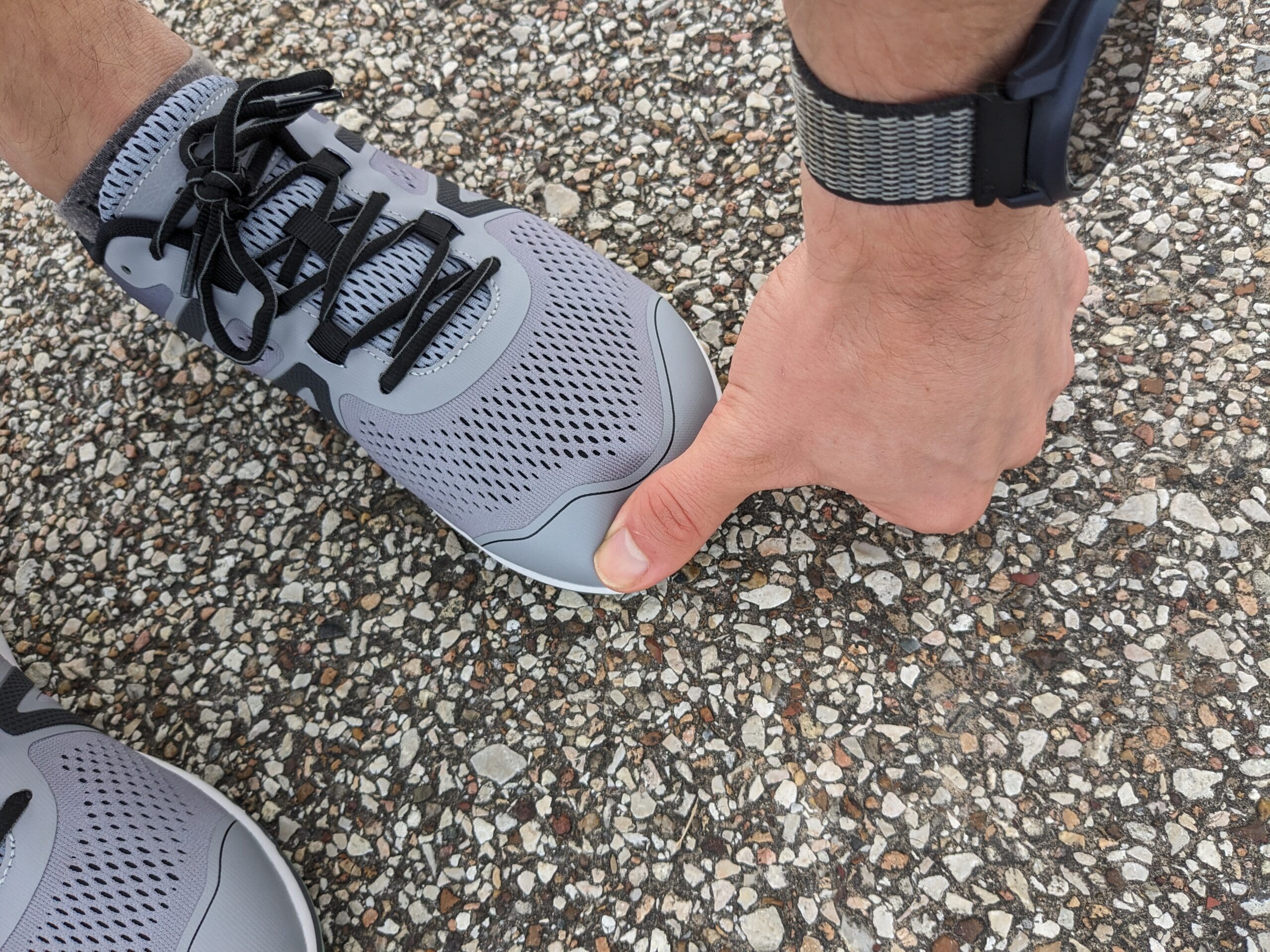
I had to take out the insole to gain some more depth. Xero Shoes are usually deeper than other barefoot brands. But in a recent trend in newer models, the HFS II is a little shallow. If you’ve ever tried Xero Shoes in the past and found them too baggy, maybe try the HFS II; it could work for you now.
The big toe area could be too sloppy for some. Many barefoot runners have wider toe splays than conventional shoe wearers. That means we need more room in the big toe and little toe areas. I found the slope around the big toe too aggressive and restrictive for big toe mobility. This will be fine for most people and will fit those with Morton’s toe (longer second toe), but if you have a wider toe splay, just go a full size larger than your standard sizing.
Use the second eyelet to get a perfect lockdown. Xero Shoes always creates shoes with great lockdown. The mixture of straps and lacing, plus the softer wrap-around heel, are great for locking the foot in place. And if you have any slippage, remember the second eyelet is available for a lace lock to give you that extra lockdown assurance.
XeroShoes.com
HFS II
(free exchange)
Here’s where the HFS II differs from its predecessor.
It’s not quite the ultimate barefoot feel you used to get from the original model.
The sole is stiffer and taller. And the upper carries on with the stiffer theme.
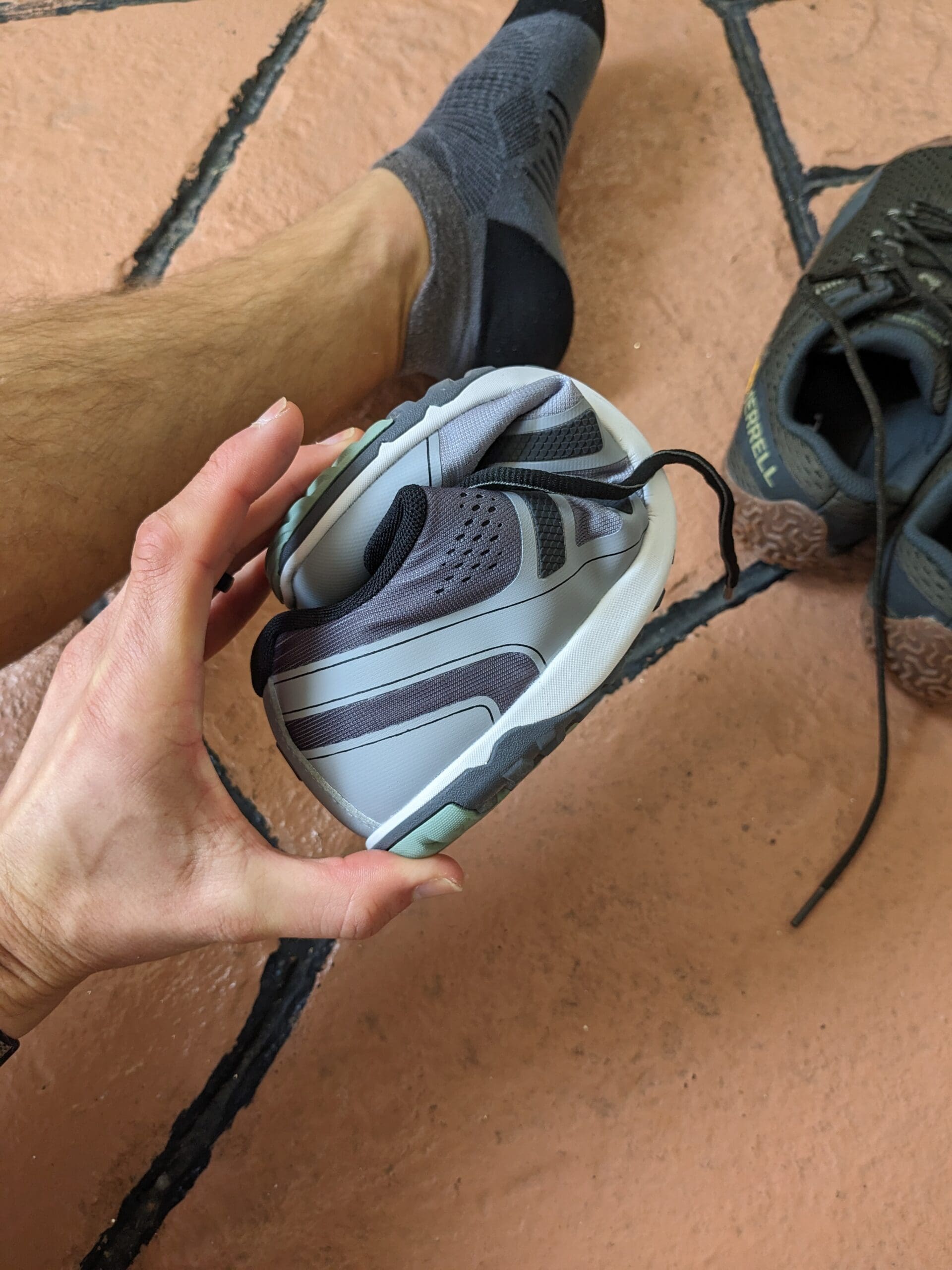
The sole has gained a few extra mm, but it is still minimal. I personally prefer a more barefoot feel, but some want that additional protection. The extra few mm of sole adds that protection, trading off for a little more sole stiffness.
The ground feel is reduced and feels more like the Prio now. Because the sole is thicker, you feel less underfoot. It feels more like the Prio now, which is great for some, not others.
The upper is stiffer all around, creating a more locked-down feel. Even though the design looks very similar to the original HFS, the overlay and upper materials are more rigid. You get a good fit with that, but it hinders flexibility and moves away from that true barefoot feel.
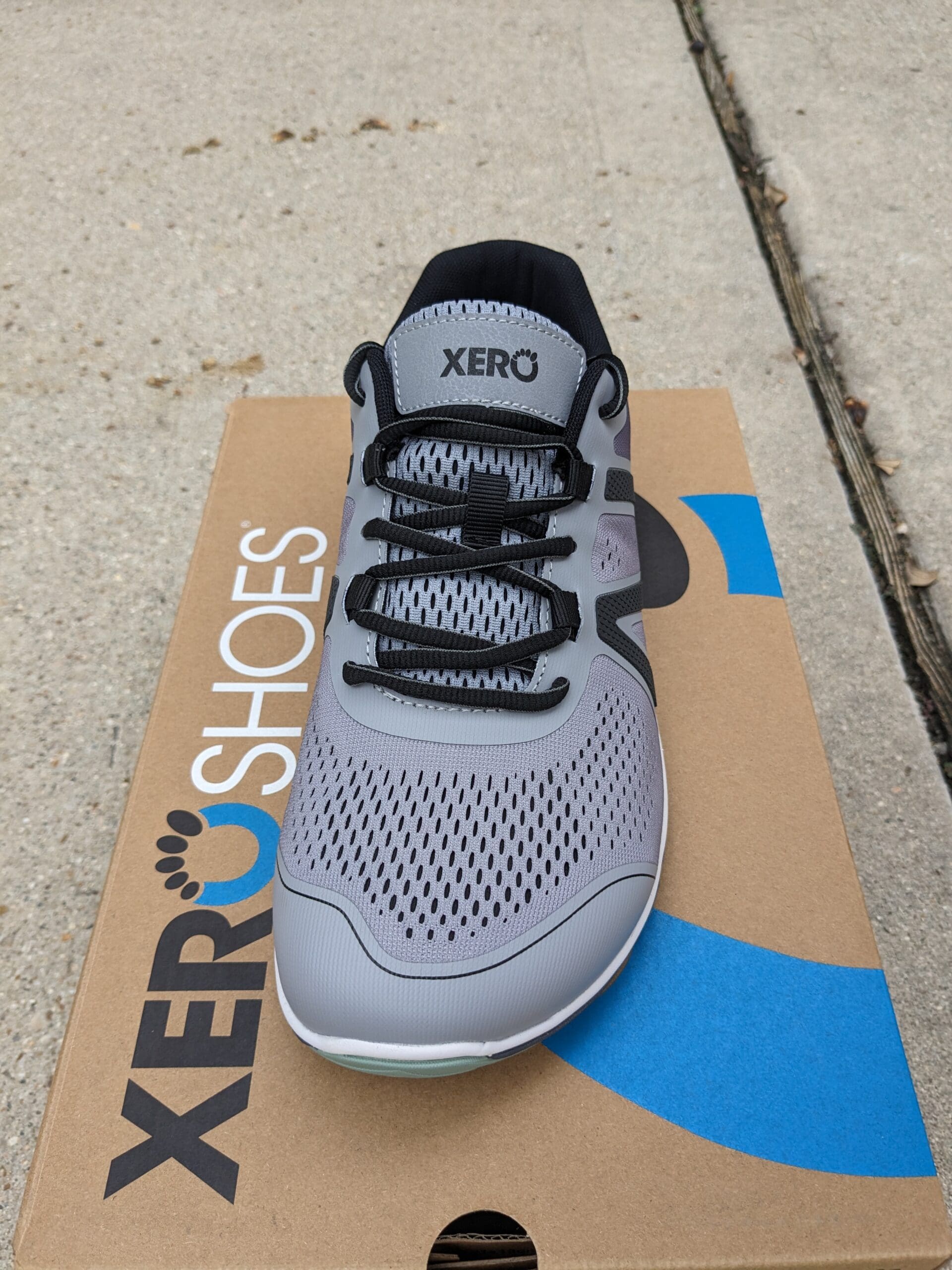
It may feel more familiar for those transitioning from a conventional shoe. The tighter fit and stiffer materials may make you feel more at home if you’re coming from a Nike, New Balance, or any other conventional brand. Nicely locked in. This makes it a good shoe for those dipping into barefoot for the first time.
The tongue and heel are softer, avoiding any pressure points. Thanks to the minimal amount of padding used throughout the shoe, I’ve had no issues with the tongue or heel rubbing.
The benefit of this stiffer, thicker stack height is a positive for durability.
A redesigned outsole seems like it’ll hold up for more miles. If I were to guess, I believe durability concerns drove the switch of the outsole. My original HFS, while still going strong, only has 400km on it, but it shows signs of wear. If Xero Shoes were to stick to their 5000-mile outsole guarantee, the sole had to be more resilient, hence the change. I think it’s more likely to get to that 5000 miles now.
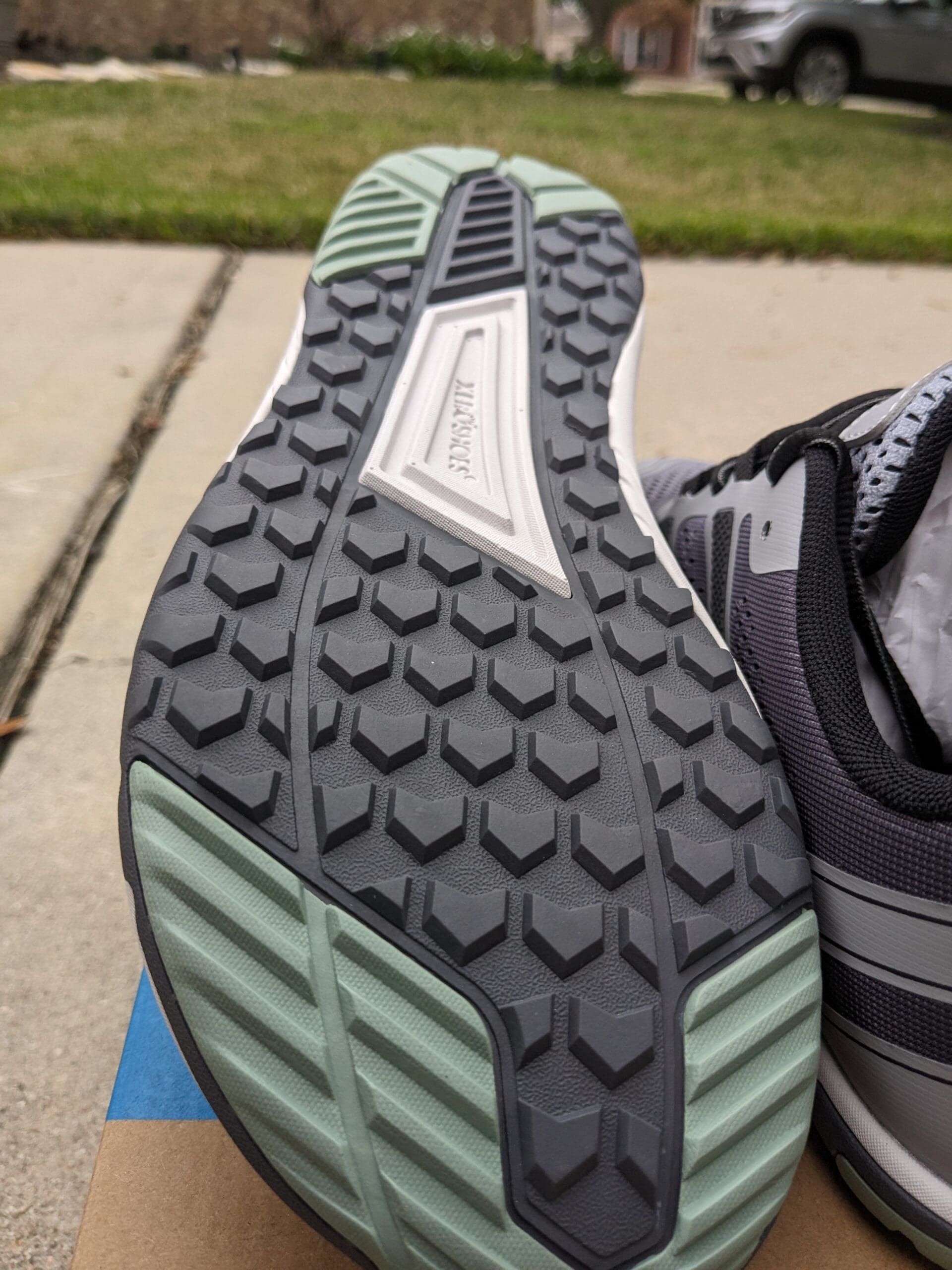
Previous weak spots around the forefoot crease point have been reinforced. The forefoot used to be very thin and vulnerable. Over time, the repetitive creasing of the thin material usually ends in a hole, affecting the shoe’s performance. Now the thicker material means it’s last a little bit longer.
The outer layer of the upper seems similar to the predecessor, but there’s a thicker inner liner. Identical to the forefoot, the inner liner appears to be tougher and thicker in general. This will likely translate to a longer last shoe.
While this update may not be great for those who loved the original HFS, it’s geared toward those transitioning into barefoot shoes or those looking to upgrade from the Prio.
There have been noticeable improvements in durability, and now, we’re likely looking at a shoe that will at least try and last the Xero Shoes 5000-mile guarantee!
And for those like me who love the older, flexible feel, we now have a similar shoe in the Speed Force II.
If you’re new to barefoot and looking for your first barefoot shoe with a tiny bit of protection
- Try the Xero Shoes HFS II
If your forefoot and toes are splayed wide
- Try the Vivobarefoot Primus Lite III
If you’re looking for the maximum barefoot feel
- Try the Xero Shoes Speed Force II
If you’re looking for a bit more cushion
- Try the Lems Primal 2
XeroShoes.com
HFS II
(free exchange)
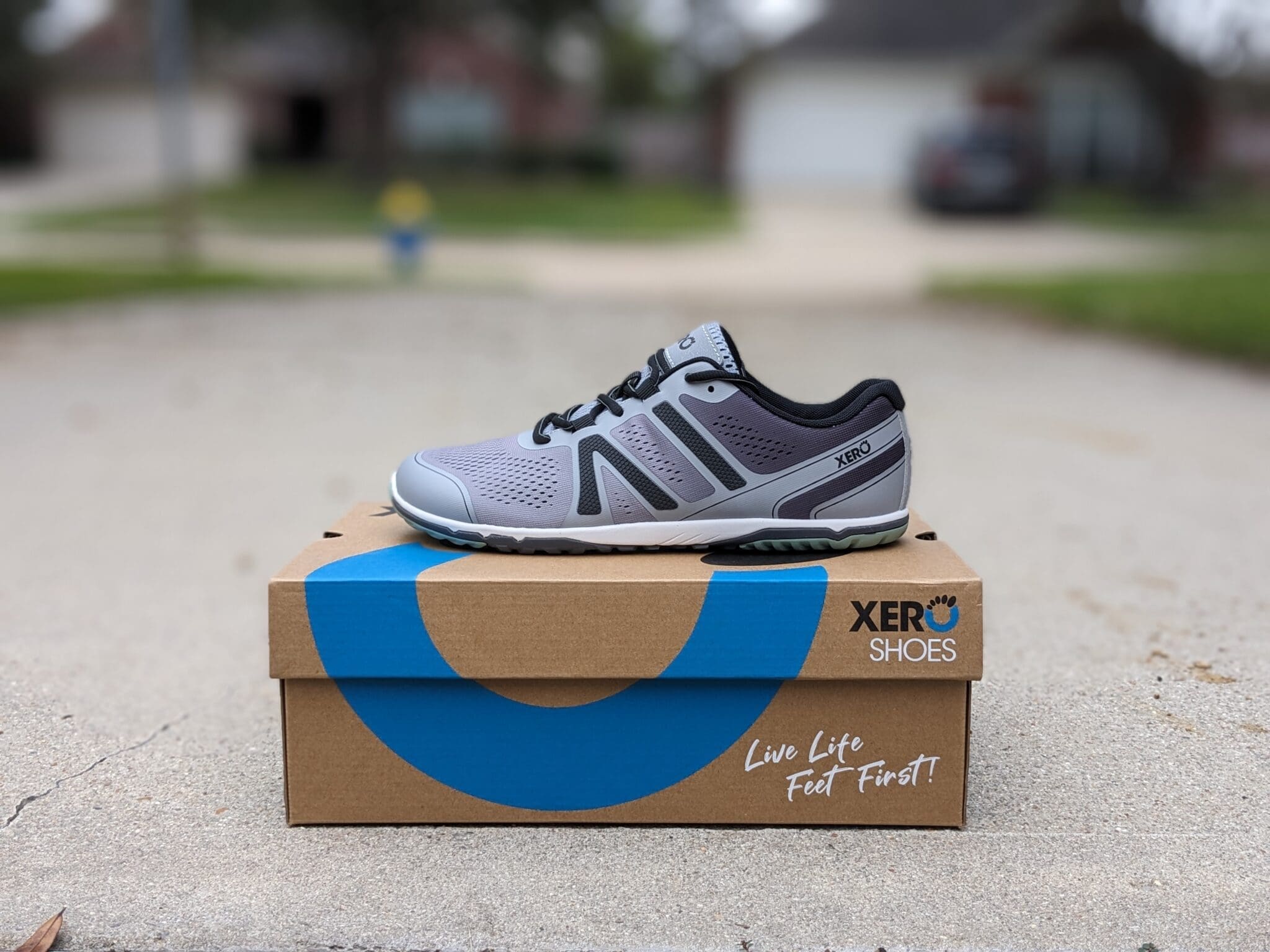
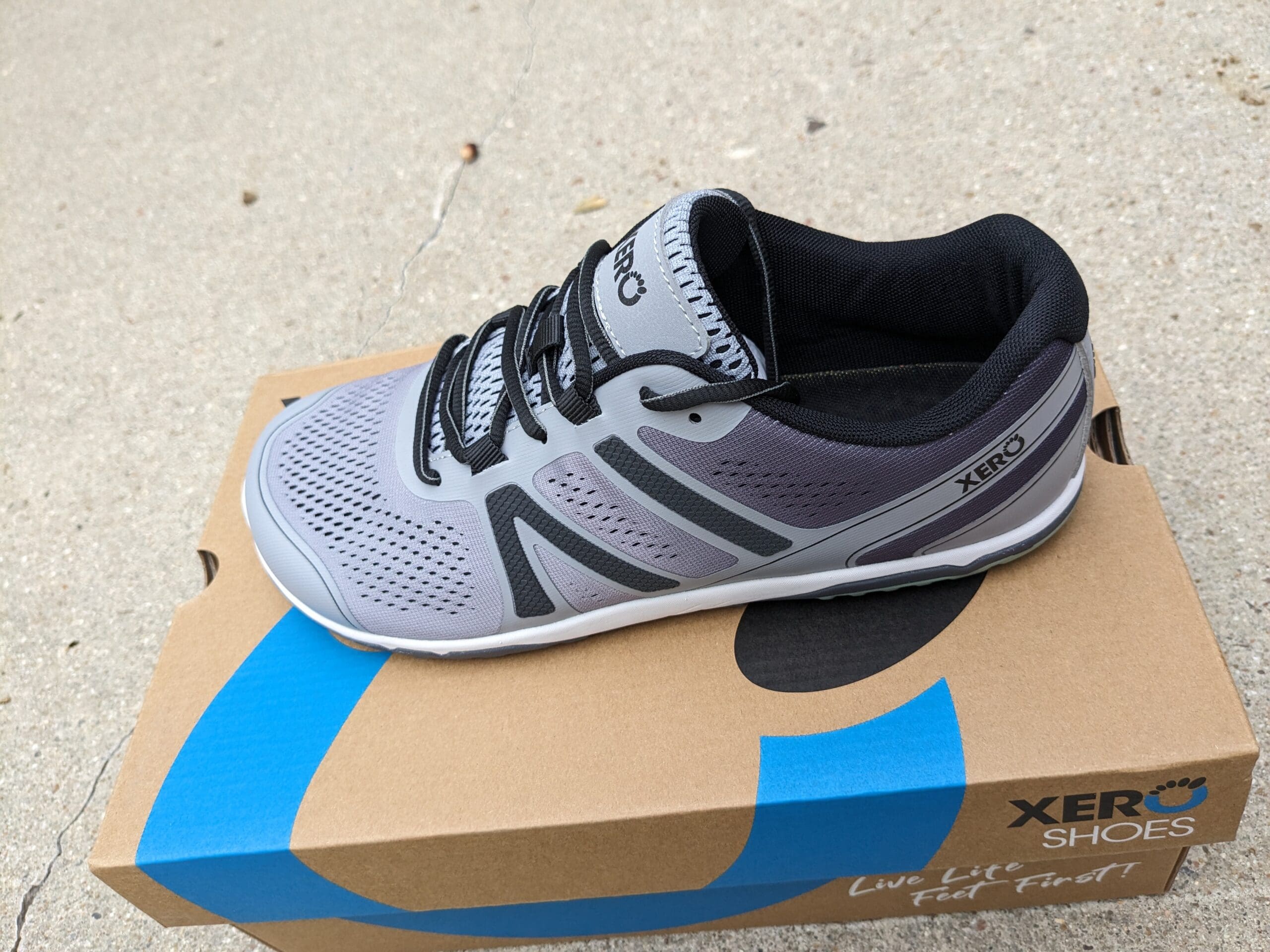
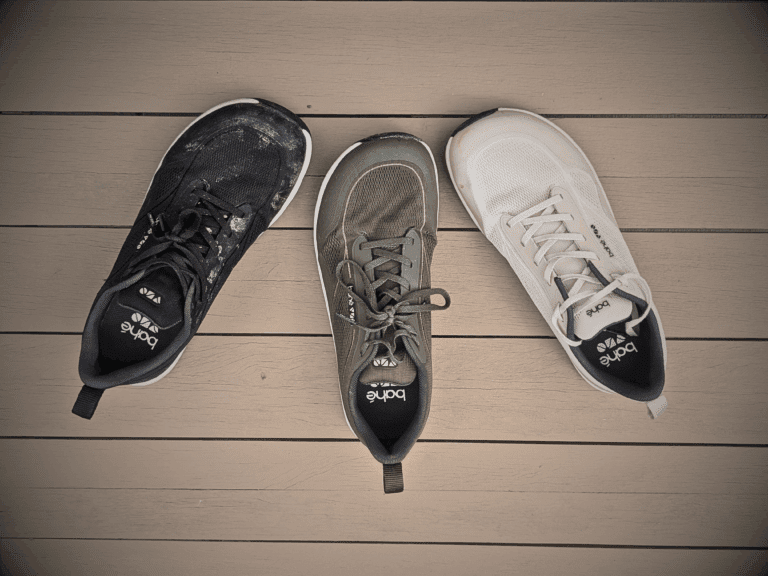
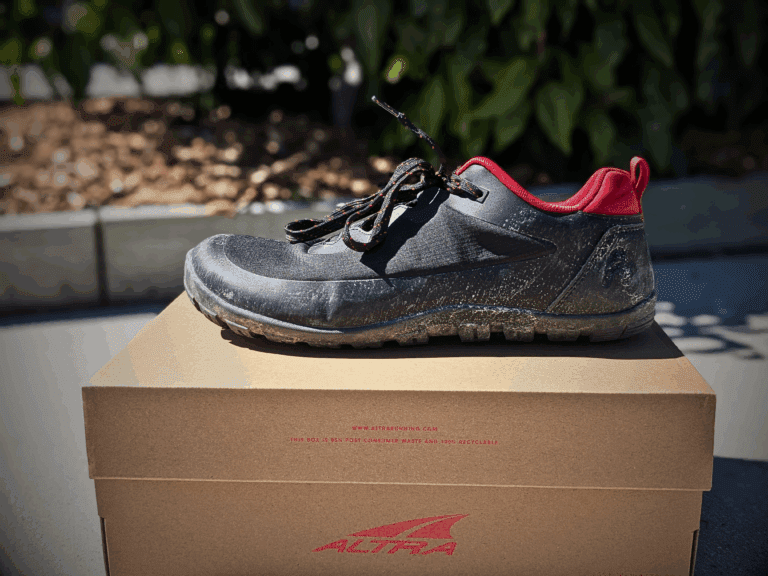
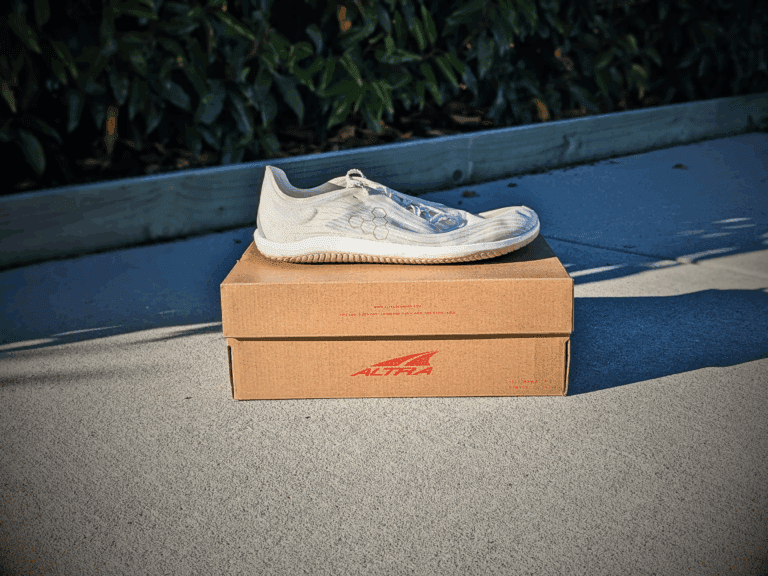
so this is likely a better shoe than the prio ? I am looking for minimalist shoes that aren’t thin. that I can wear as a beginner without worry.
It most cases yeah. The HFS 2 is a better shoe than the prio. It’s more foam underfoot that could help your needs. That said, this is still a minimal shoe with ~10mm of stack height. So if you’re never worn minimal shoes before, just take it easy. Gradually rotate them in to usage by starting to walk in them, then progress to a small amount of running if that’s what you desire.
I don’t have a good shoe right now and I am considering this. I got Feelgrounds previous knit version in size 44 eu and it is a little small but it has been my only shoe I wear for a while. I have been almost entirely at home apart from going outside to feed cats I care for. I ordered several shoes. paperkrane in 45 eu and bad shoe for me and too big (too much space between my foot and the front or the back). escalante 4 in 45 eu but a little small also too much stack height for me.
im now deciding between 44.5 and 45 hfs 2. I need it because I am moving out with dogs and need to walk them daily for at least around 1 hours and a half or so in total (right now my brother walks them plus they have access to a yard). need something protective and comfortable for long walks that will also allow me to go from road to trail.
I am thinking of buying both sizes anyway and selling the one that fits worse later. right now it is urgent for me to get a good shoe and just not have to worry about it to allow me to move forward with my life. I am getting it on discount. I actually already ordered size 45 along with prio neo 44.5 but unsure about it I feel now like I lean towards 44.5 xero because I am thinking at worst it will be similar to my feelgrounds probably a little bit better and that is ok enough for me to get by but if it is too big it may make walking in it uncomfortable. i like a shoe that feels close to my size not too big. I reached out to customer service to cancel it and I am gonna either order just 44.5 size (with or without prio neo) or both sizes (without prio neo).
I think the key thing here is to work out where it’s small, or ill fitting for you. Is it the length, or a different dimension?
First we should try and get the length right. It should be long enough with a little room in front of your toe to ensure your toes do not press against the end when walking, or running (whatever activity you’re expecting to do in them). For me, that’s usually around a good thumbs width beyond my longest toe, but that can differ from model to model.
After that, we should look at the width across different areas of the foot. The forefoot should be wide enough, to allow a good toe splay, and not be constricting. The midfoot should be snug, but you should not be hanging over the side of the shoe/upper material. And the heel should be well locked down with little to no movement.
Lastly, there’s the depth of the shoe. You should be able to tight the laces over the top of the foot, without significant bunching in the upper material.
Taking all these factors into account usually leads you to a shoe and brand that works best for you. For example, if your forefoot is average to narrow, and a similar width to your midfoot, and your foot is a little deeper, Xero Shoes works very well. Whereas if you have a shallow depth, but a wider forefoot, Vivobarefoot is often a good choice. There are obviously more options, but these serve as good examples.
Could you tell me where the Altra Escalantes felt too small? That way I may be able to advise another shoe that could work for you.
I just got these and I’m coming from the prios. Will that extra 0.5mm make a difference in casual wear? I’m trying to understand the differences between stack height and the insole when it comes to how they feel.
As a “feel”, I believe it does. The HFS II just felt more structured to me. I think the Prio sits somewhere between the HFS I and the HFS II. But if you think the Prios worked in the past, I’d say stick with them!
I absolutely loved the Mesa Trail 2! Fit is perfect for my foot: deep and fits my toe shape (longer second toe) perfectly. The toe box is perfect, the lockdown is perfect, etc. My only niggle with that shoe is that the rubber does poorly for me in the wet.
So, I was eager to try the HFS2 because I’d heard many good things about the HFS. To date, I’ve hardly worn the shoes (which I’ve had for a year) because they just fee nowhere near as good as the MT2. They feel stiff, slappy (non flexible up front), and have poor traction. The rubber seems very hard and slick. They are just not fun to wear. They don’t inspire me to move, like the MT2 does.
I was glad to see your review, because they mirror my thoughts. For sizing, I’ve gone up a half-size from the size of my MT2. But, even with the extra length, they still feel stiff and are just a joy-kill for me.
I have heard the original HFS is back in production due to rigorous demand, so perhaps I’ll give them a shout, but now I’m a little bit concerned they may not be what I thought they would be…
I was bummed when the MT2 went away! I suppose they have been replaced by the Scrambler shoes?
The thing about Xero shoes: They seem to compromise grip for durability of the rubber compound. They are not sticky shoes. But the soles do last! It’s a compromise, of course. I would rather have a stickier compound that does not last as long, but I understand their strategy. However, they fit my foot better than anything I’ve ever worn. So I will keep trying until I find “The One” again.
Yeah that all makes sense. I was disappointed with the HFS 2, but I see that it serves a different market. I’ve 100% recommend you give the original HFS a try. It’s much more similar to the Mesa Trail 2. Here’s my review on it. https://barefootrunreview.com/xero-shoes-hfs-review/. Otherwise I’d say try the Speed Force 2. https://barefootrunreview.com/xero-shoes-speed-force-ii-review I love that shoe! Super minimal, lightweight, but runs a bit small. 1/2 size up from your MT2.
Also, I’m pretty certain the MT2 hasn’t been discontinued? I still see it for sale. I really don’t think the Scrambler is a good replacement for the MT2. They both have their place but the MT2 is the true minimal trail king!
Thanks much for your reply. Didn’t see it until just now.
For running on the track, would you choose the speed force 2, or the HFS? And why?
Cheers,
John
Maybe the Speed force because it’s a little more secure. But there’s very little in it. They’d both be great.
Many thanks Nick. You have excellent information on shoes and running in general here on your website. Well done. As someone who is on-again, off-again with running it’s a great font of information I sorely (pun) need.
By the way, what is your mate of choice? Green? Smoked?Etc.
John